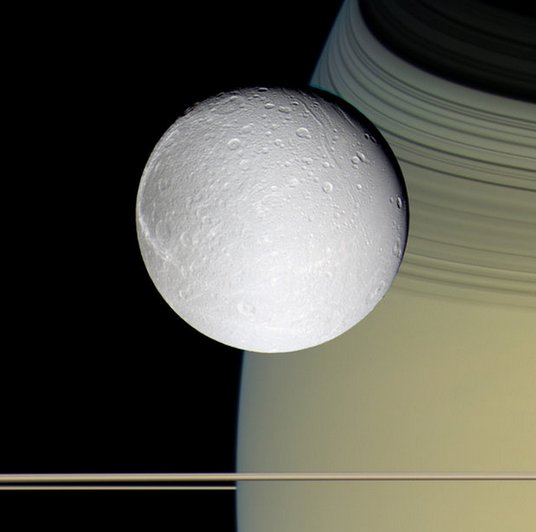Like Titan, Enceladus and Tethys, the Saturnian moon Dione is subjected to the warping and twisting effects of Saturn's tidal gravity. It show bright, relatively smooth and roughly circular surface patches where ponds of liquid water appear to have frozen across craters. These events likely happened relatively recently on geologic time scales.

|
Above:
Dione in front of Saturn by Cassini's wide-angle camera through
blue, green and infrared filters. Cassini was flying 24,200 miles
(39,000 km) from the moon to produce this photo.
Credit: NASA/JPL-Caltech/SSI
Dione, about 377 km wide, is mainly composed of water in the form of ice but its density is higher than that of the other moons of Saturn (apart from Titan); it suggests that it probably contains a fairly large quantity of denser material, such as rocks of silicates.
Dione was probably geologically active shortly after its formation, with cryovolcanism resurfacing most of the surface and leaving white streaks. Once the internal activity and resurfacing ceased, the formation of craters by smaller bodies continued mainly on the front hemisphere, leading to the disappearance of the streaks.
The Cassini spacecraft was sent on its way to Saturn in 1997. Since then, it travelled nearly four billion kilometers, delivered a probe to Titan, discovered structures on Saturn's icy rings, detected organics on Titan and probable underground oceans on Titan, Enceladus, Dione and Thetys. From 2017 on, the probe will spiral down toward Saturn itself, streaming data to Earth before being torn apart.